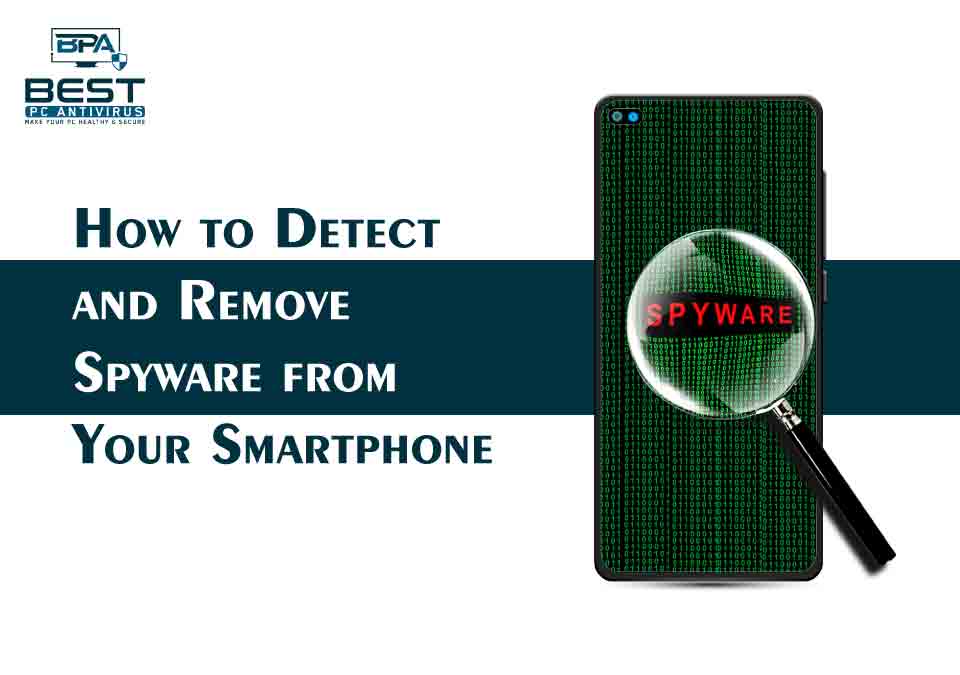Our digital selves have become an integral part of our identities. Our digital personas are formed by the emails we send, the conversations we have on social media (both private and public), the photos we share, the videos we watch, the apps we download, and the websites we visit. Detect and Remove Spyware
There are safeguards in place to prevent a government agency, country, or cybercriminal from prying into our digital lives, such as the use of virtual private networks (VPNs), end-to-end encryption, and browsers that do not track user activity.
Governments and law enforcement agencies, on the other hand, are now taking advantage of sophisticated spyware developed and commercially offered by companies, including NSO groups. When implanted on a device, it can be extremely difficult to detect and remove.
This guide will walk you through the various types of malicious software on your iOS or Android device, the warning signs of infection, and how to remove such pestilence from your mobile devices if possible.
How to Detect and Remove Advanced Spyware from an iOS or Android Device
What is spyware?
Nuisance ware is frequently bundled with legitimate applications. It interrupts your web browsing with pop-ups, changes your homepage settings without your permission, and may collect your browsing data to sell to advertising agencies and networks. Despite being classified as malvertising, nuisance ware is not generally dangerous or a threat to your core security.
Then you have basic spyware. These generic types of malware steal operating system and clipboard data, as well as any potentially valuable information, such as cryptocurrency wallet data or account credentials. Spyware isn’t always targeted and can be used in phishing attacks in general.
Stalker ware, or advanced spyware, is a step up. This malware, which is often unethical and dangerous, is sometimes found on desktop systems, but it is now most commonly implanted on phones. Spyware and stalker ware can be used to monitor emails, SMS, and MMS messages sent and received; intercept live calls for the purpose of eavesdropping across standard telephone lines or Voice over IP (VoIP) applications; covertly record environmental noise or take photos; track victims via GPS; or hijack social media apps such as Facebook and WhatsApp.
Stalker ware is frequently downloaded in order to spy on an individual, such as in cases of domestic abuse.
You now have commercial spyware that is of government grade. The most well-known recent case is Pegasus, which was sold to governments as a tool for combating “terrorism” and law enforcement but was ultimately discovered on smartphones belonging to journalists, activists, political dissidents, and lawyers.
Warning signs of an attack
If you receive strange or unusual social media messages or emails, this could be a sign of a spyware infection attempt. You should delete them immediately without opening any links or downloading any files. The same is true for SMS content, which may contain links designed to trick you into unknowingly downloading malware.
These phishing messages will trick you into clicking a link or executing software that contains a spyware or stalker ware payload in order to catch you off guard. Because user interaction is required when malware is loaded remotely, these messages may attempt to scare you, such as by demanding payment or posing as a failed delivery notice.
Initial infection messages from stalker ware may be more personal and tailored to the victim.
Physical access or the victim’s unintentional installation of spyware is required. Some spyware and stalker ware variants, on the other hand, can be installed in less than a minute.
If your phone disappears and reappears with different settings or changes that you do not recognise – or if it has been confiscated – this could be an indication of tampering.
How do I know if I’m being watched?

Surveillance software is becoming increasingly sophisticated, making it difficult to detect. However, not all spyware and stalker ware are invisible, and you can find out if you are being watched.
Android
A setting on an Android device that allows apps to be downloaded and installed outside of the official Google Play Store is a dead giveaway.
This may indicate tampering and jailbreaking without consent if enabled. However, not all spyware and stalker ware require a jailbroken device.
iOS devices that haven’t been jailbroken are generally more difficult to infect with malware, unless a zero-day exploit is used. The presence of Cydia, a package manager that allows users to install software packages on a jailbroken device, may indicate tampering (unless you knowingly downloaded the software yourself).
Other indications
Unexpected handset battery drain, overheating, and strange behaviour from the device’s operating system or apps are possible.
Unauthorized surveillance is unethical. It creates a severe power imbalance in domestic situations. Listen to your sixth sense if it tells you something is wrong. It is not worth sacrificing your privacy and personal security for a physical object.
If your device becomes compromised, reclaim control of your right to privacy – whether or not this means replacing your handset entirely – but only if your physical safety is not jeopardised. In such cases, you should contact authorities and investigators rather than tamper with your phone.
How do I get spyware off my device?
Spyware and stalker ware are intentionally difficult to detect and remove. In most cases, it is not impossible, but it may necessitate some drastic measures on your part. Sometimes abandoning your device is the only option.
When stalker ware is removed, some operators will receive an alert informing them that the victim’s device has been cleaned up. If the flow of your data suddenly stops, it is another clear indication that the malicious software has been removed.
If you believe your physical safety is in jeopardy, do not tamper with your device. Instead, contact the police and other assisting agencies.
Here are some options for removal:
Scan for malware: There are mobile antivirus solutions that can detect and remove spyware. This is the simplest solution, but it may not be effective in all cases. Malwarebytes, Avast, and Bitdefender, among others, provide mobile spyware-scanning tools.
Change your passwords: If you suspect that your accounts have been compromised, change the passwords for all of your important accounts. Many of us have one or two “hub” accounts, such as an email address that is linked to all of our other services. Remove any ‘hub’ services that you use from a compromised device.
Make two-factor authentication (2FA) available: Individual accounts can be protected when account activity and logins require additional consent from a mobile device. (However, spyware may intercept codes transmitted during 2FA protocols.)
Consider registering for a new email address: The new email address is only known to you and is linked to your primary accounts.
Update your operating system: It may seem obvious, but when an operating system releases a new version, which often includes security patches and upgrades, it can cause conflict and problems with spyware if you’re lucky. Keep this up to date.
Physically safeguard your device: A PIN code, pattern, or enabling biometrics can prevent future tampering with your mobile device.
If everything else fails, factory reset… or trash it: A factory reset and clean install on the device you suspect is infected may help remove some types of spyware and stalker ware. However, remember to back up any important data first. This is typically found on Android platforms under Settings > General Management > Reset > Factory Data Reset. Go to Settings > General > Reset on iOS.
Unfortunately, some stalker ware services may persist even after a factory reset. If all else fails, consider restoring to factory settings and then discarding your device.
MVT (Mobile Verification Toolkit), an open source project created by Amnesty International, is a cyber forensics package capable of scanning mobile devices for advanced spyware. This, however, is best suited to investigators.
What about sophisticated spyware?
Government-grade spyware may be harder to detect. However, according to a Pegasus guide published by Kaspersky, there are some actions you can take to reduce the risk of being subjected to such surveillance, based on current research and findings:
Reboots: Rebooting your device on a daily basis will keep persistence at bay. Because the majority of infections appear to be based on zero-day exploits with little persistence, rebooting can be detrimental to attackers.
Turn off iMessage and Facetime (iOS): iMessage and Facetime are appealing avenues for exploitation because they are features that are enabled by default. In recent years, a number of new Safari and iMessage exploits have been developed.
Use a browser other than Safari, preferably Chrome: Some exploits are ineffective on alternatives such as Firefox Focus.
Use a reputable paid VPN service and download an app that alerts you when your device has been jailbroken. This check is performed by some antivirus software.
Individuals who suspect a Pegasus infection should also use a secondary device, preferably one running GrapheneOS, for secure communication.
What are Google and Apple doing to address this issue?
Google and Apple are generally quick to respond to malicious apps that circumvent the privacy and security safeguards imposed in their respective official app stores.
Google removed seven apps marketed as employee and child trackers from the Play Store several years ago. The tech titan took a dim view of their overreaching functions, which included GPS device tracking, SMS message access, contact list theft, and potentially the exposure of communication taking place in messaging apps. Google has also prohibited the use of stalker ware ads. However, some apps appear to be slipping through the cracks.
When it comes to parental control apps, Apple has cracked down, citing privacy-invading functions as the reason for removal. For parents who want to limit their child’s device usage, the company offers Screen Time, its own parental device control service. Furthermore, the company does not permit sideloading, which Apple claims prevents mobile threats from spreading within the iOS ecosystem. Best Pc Antivirus
Read More : The parent’s guide to keeping their children safe online




